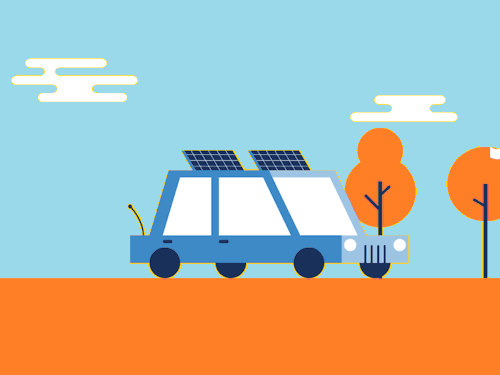Auto Industry Disruption And Digital Marketing
There are structural changes and disruption that the auto industry is going through not only in India, but globally and eventually this will impact the turns marketing will take, and also enter some new lanes marketing has not ventured into earlier.
There are three tectonic forces hitting the auto industry simultaneously, and even one of them would be powerful enough to disrupt the entire industry. This powerful trifecta of forces is fleets represented by app-based Cabs -on-demand like Uber/Ola, electric vehicles EV replacing IC engines, and finally, autonomous or driverless cars. A lot is written and said about the first two – the shared economy phenomenon, and the advent of electric. Not much attention, however, is paid to the third major disruption – driverless or autonomous cars. Most of us tend to believe that this is something that will never happen in India or will take a huge amount of time.
Autonomous cars will become a new marketing medium. In some sense, the car will become the new living room, with the lounging space and a host of entertainment options, and multimedia screens dotting every available surface inside the car. This will give a range of cross-channel opportunities for digital marketers,that could combine the offline and online mediums. There could be seamless advertising across car screens and billboards that the cars pass by. As the car nears a retail outlet, the two could communicate with each other to alert the passenger of discounts and offers. Your phone, the car, and physical outlets would work with each other seamlessly and present great marketing opportunities using connected IoT devices. Targeted advertising could mean something totally new, as the vehicle itself could be ordered (with consent, of course) to take the passenger directly to a new restaurant or outlet for introduction offers. Business development could itself develop.
For marketers, thus, there will be three huge challenges and opportunities:
• Precise location-based targeting: it will become very critical to integrate both physical and digital across cars, devices and the outside physical environment (billboards, retail outlets, fuel stations, restaurants) on the move, and build effective and powerful cross-channel communication and promotions
• Hyper – personalisation: Data from ultra-intelligent autonomous vehicles will afford even greater personalization opportunities. Ads could be served very effectively based on even physical purchase/visit history, not only the digital one, for example. Entertainment options could be very precisely tailored.
• Real-time marketing: Alerts, ads, and messages will be based on where the customer is and what her destination is. Content can be dynamic and contextual to the location and intent
Technology tends to greatly influence how customers think and behave, and disrupt businesses. This happened with cars, with television, the PC and mobile phones. A similar, massive disruption will happen again, with autonomous cars. Good marketers have looked upon each disruption as an opportunity and innovated and not just adapted but leapfrogged using such shifts. Happy not-driving.
• Hyper – personalisation: Data from ultra-intelligent autonomous vehicles will afford even greater personalization opportunities. Ads could be served very effectively based on even physical purchase/visit history, not only the digital one, for example. Entertainment options could be very precisely tailored.
• Real-time marketing: Alerts, ads, andmessages will be based on where the customer is and what her destination is. Content can be dynamic and contextual to the location and intent
Technology tends to greatly influence how customers think and behave, and disrupt businesses. This happened with cars, with television, the PC and mobile phones. A similar, massive disruption will happen again, with autonomous cars. Good marketers have looked upon each disruption as an opportunity and innovated and not just adapted but leapfrogged using such shifts. Happy not-driving.
Source:Devendra Chawla and Jaspreet Bindra





